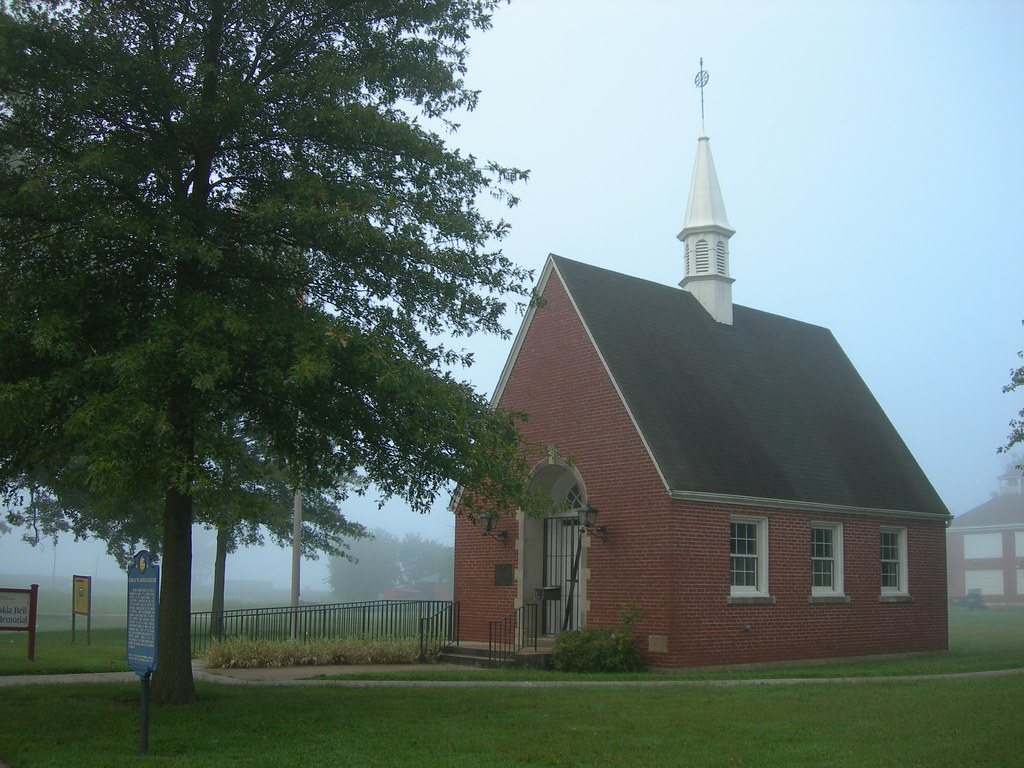Mortals try to control nature and generally fail. I love it when people select rivers for boundaries. Invariable rivers flood, carve new channels, and people pretend it never happened. The old boundary remains in place with a chunk of territory now sitting on the “wrong” side of the river, fully separated from its homeland. I covered just such an instance several months ago, in the town of Carter Lake, Iowa.
I’m also fascinated by the rise and fall of settlements, especially those that seemed so promising as they began, only to disappear from memory. I once wrote about Belmont, the first capital of Wisconsin, which now exists only as two historic buildings perched on the corner of a cornfield along a winding rural road.
Kaskaskia Combines Both!
Imagine how pleased I was to be able to mashup both themes into a single topic. How about a former state capital sitting on the wrong side of a shifting river?
This is Kaskaskia, Illinois. It has an amazing but relatively unknown history. French explorers arrived here by the Seventeenth Century. A village arose on this spot along the Mississippi River by 1703. Perhaps seven thousand inhabitants lived here a hundred years later, a remarkable population for the time. For that entire century it served as a commercial hub and a gateway to points further west.
Kaskaskia became the territorial capital of Illinois when it formed in 1809, and remained the capital upon statehood in 1818. The capital stayed in Kaskaskia another three years until it moved to Vandalia, a more centrally-located town.

Kaskaskia was well-established and successful. So what happened?
The population of Illinois and surrounding states began to expand greatly as settlers streamed across the Appalachian Mountains. They fanned out throughout the plains and formed towns that would soon eclipse Kaskaskia both in size and significance. The Mississippi River then delivered successive death blows, destroying much of the town in 1844 and again in 1881. The 1881 flood resulted in a permanent shift of the river channel, and suddenly Kaskaskia was sitting on the Missouri side of the river, totally separated from the rest of Illinois.
Flooded, beaten, cleaved, and forgotten, only 9 residents remained in Kaskaskia at the 2000 Census (well, 36 if you count the surrounding farmland). The town with so much promise that so dominated the surrounding terrain for more than a century, important enough to become the chosen capital for a newly established state, slipped into complete and utter obscurity.

Leave a Reply